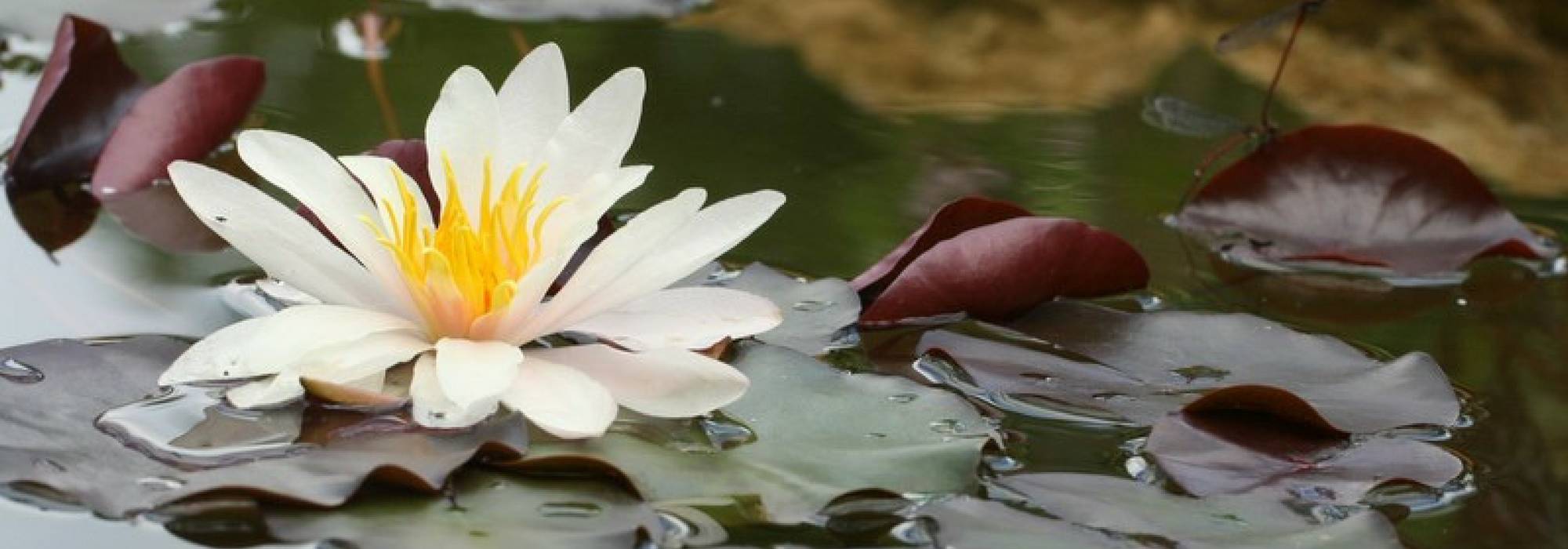
10 aquatic plants, submerged or floating
to enhance your garden pond
Contents
Vegetating your pond allows it to be better integrated into the garden and makes it more natural. Furthermore, aquatic plants are often oxygenating, pollutant-removing and are therefore essential for balancing the medium. They are also very beneficial for aquatic life.
Discover our selection of aquatic plants to enhance your water feature.
Water lilies (Nymphaea)
Water lilies are the most well-known of pond plants. Their rootstock needs to be completely submerged. The heart-shaped floating leaves form spreading mats on the water’s surface from which large cup-shaped flowers emerge. They come in several colours, from white to red, including yellow and pink.
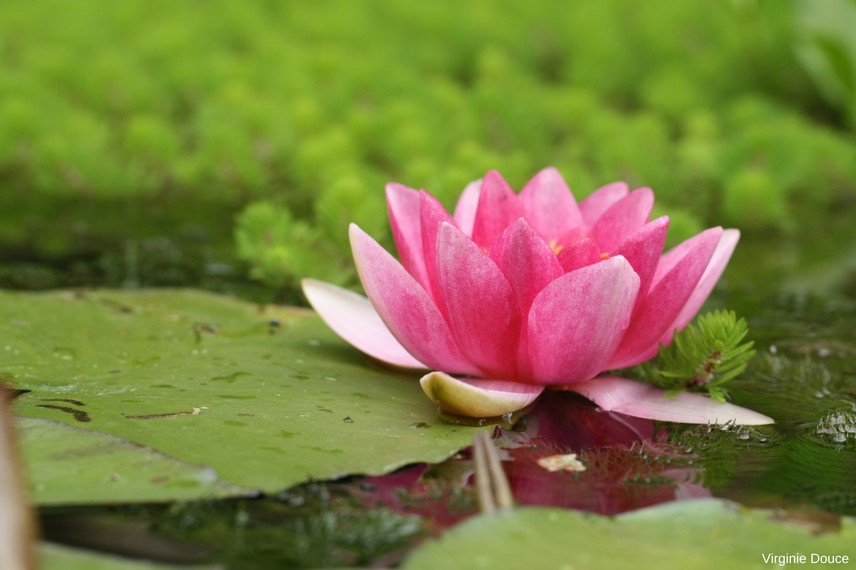
Water lily flowers.
Water lilies require a warm and very sunny exposure. Indeed, they need a minimum of 6 hours of sunlight to bloom well. Thus, the flowers continuously renew from June to September.
Depending on the varieties, they require a more or less deep water height to thrive. For example, dwarf varieties are perfect for flowering small water features with limited depth. Similarly, a miniature water lily is content with a water depth of 15 to 30 cm (between the top of the basket and the water surface) and is suitable for a pond of 1 m2. A large variety requires a minimum depth of 50 cm and a surface area of over 2 m2 to spread its broad foliage.
Every 3 to 4 years, you will need to divide your water lily in its basket to rejuvenate it. When the leaves emerge from the water and overlap, it is time to take action. You can do this in spring or autumn.
Tips:
- good water clarity facilitates the passage of light and its rapid warming. This is the guarantee of earlier flowering.
- water lilies do not like moving water.
Some varieties:
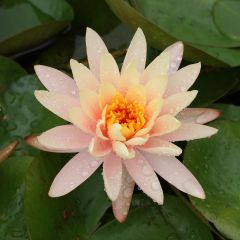
Nymphaea Aurora - Water Lily
- Flowering time July to October
- Height at maturity 15 cm
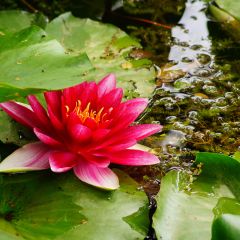
Nymphaea Attraction - Water Lily
- Flowering time July to October
- Height at maturity 20 cm
Read also
Planting water liliesLotus (Nelumbo sp.)
The lotus develops large, round green leaves above the water. The flowers form a beautiful, very double cup, which evolves into a fruit resembling a watering can. There are many cultivars with varied colours. The hardiest are Nelumbo nucifera and Nelumbo lutea.
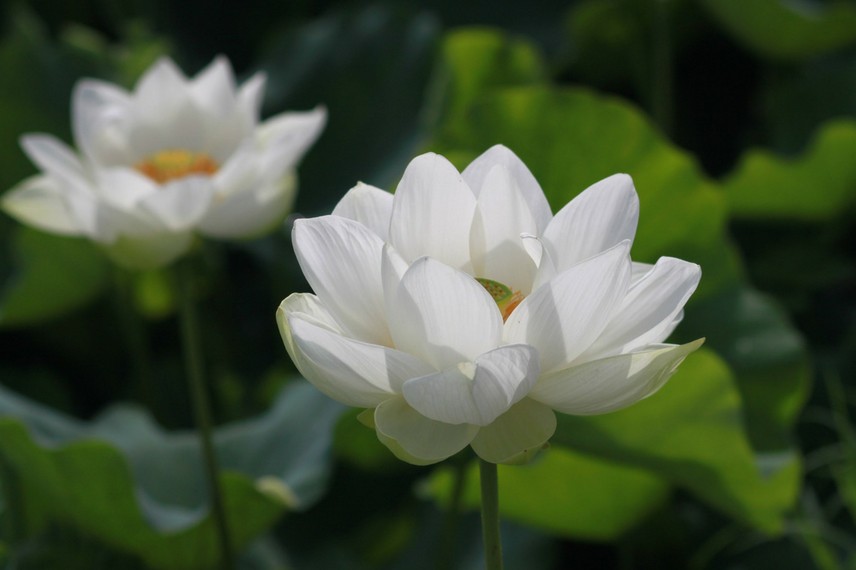
White lotus flower.
Plant it in 60 to 80 cm of still water. In mild climates, it is possible to plant it less deeply. It is better to reserve a large space for them. For small ponds, it is possible to grow it in a large round container, as wide as possible and with a minimum of 20 litres. The rootstock should be planted 10 cm deep, and the basket should have at least 60 cm of water above it.
Dividing a lotus rootstock is a delicate operation. The nodes are very fragile and must not break. You should cut the tuber 3 cm from a node. In a pond, divide every 3 to 4 years. In a 20-litre container, you will need to divide your lotus every year, in spring when the rootstock is in a vegetative rest.
They require a warm and very sunny position.
Discover other Aquatic plants
View all →Available in 0 sizes
Available in 1 sizes
Available in 2 sizes
Available in 3 sizes
Available in 1 sizes
Available in 1 sizes
Available in 1 sizes
Available in 1 sizes
Available in 1 sizes
Available in 1 sizes
Pickerel weed (Pontederia cordata)
The pickerel weed forms large, elegant clumps with lance-shaped leaves supported by long stems measuring 50cm to 1m in height. The large flower spikes in shades of blue, white, or pink depending on the variety, rise above the foliage from July to October.

The pickerel weed forms a beautiful flowering clump.
It should be placed under 20 to 40 cm of water. In small ponds, we recommend planting it in a pot as its growth is rapid. Count three young plants to cover 1m2. Afterwards, it requires division and repotting every 2 to 3 years at the start of the growing season.
All exposures are suitable for it, although it prefers sunny areas.
The pickerel weed is an excellent plant for stabilising banks and it also promotes water purification.
Water hawthorn (Aponogeton distachyos)
The water vanilla features a lovely white flowering speckled with purple, fragrant blooms floating on the surface of the water from October to May, outside of frost periods. In summer, the plant enters a resting phase. The dark green ovate foliage spreads beautifully over the water and then turns purple during the season, especially in full sun.
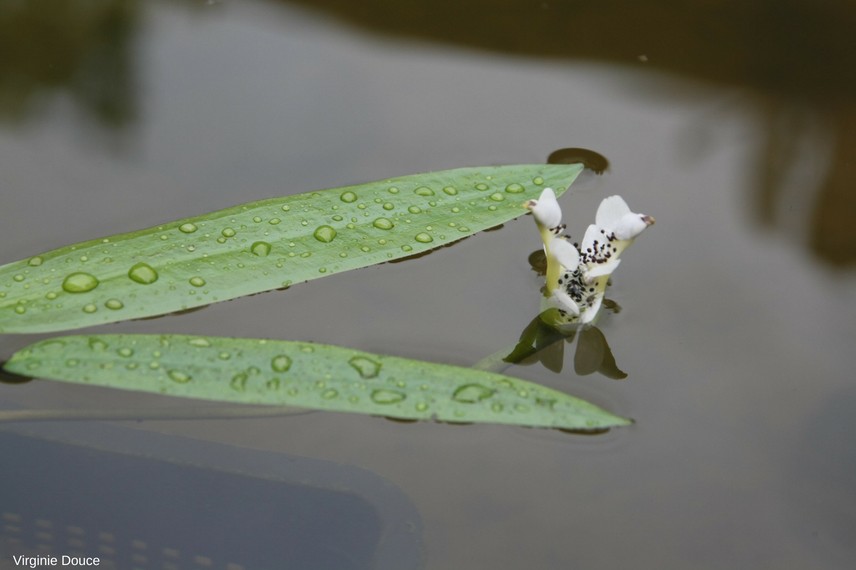
Atypical flower of the water vanilla.
Water vanilla thrives in both still water and in a gentle current.
Place it in all exposures, preferably in a cool situation, in partial shade or shade. Install it between 10 cm and 1 m underwater. In sunlight, place it deeply, at 1 m depth. Count 2 plants to fill 1 m2. Divide the plant every 3 to 4 years.
It is a great substitute for water lilies in ponds that are too shaded to accommodate them.
The white thalia (Thalia dealbata)
The white thalia is a perennial plant with large green leaves, evergreen in mild climates. In summer, spikes of violet flowers appear at the top of tall stems.
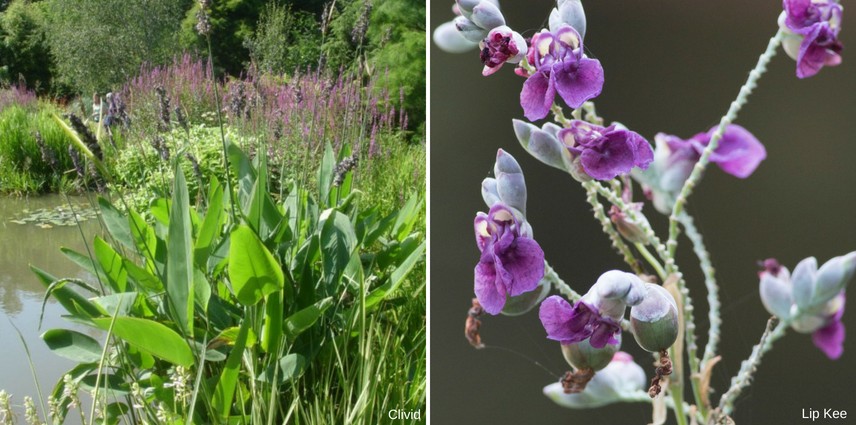
Leaves and flowers of the thalia.
Plant it in a large pot (minimum 50 cm on each side) to prevent it from toppling over in the wind. The pot should be placed at a sufficient depth to avoid suffering from severe frosts, which is between 40 cm and 50 cm. In colder regions, the basket will need to be placed much deeper for winter. A single young plant is sufficient for an area of 1 m2. Divide the stump every 3-4 years.
Position it in full sun in stagnant water or with a gentle current.
Water clover (Menyanthes trifoliata)
The leaves of the water clover are divided into three large ovate leaflets and form floating mats. In spring, stunning star-shaped white flowers with fringed petals are borne on upright stems 15 to 30 cm above the water.
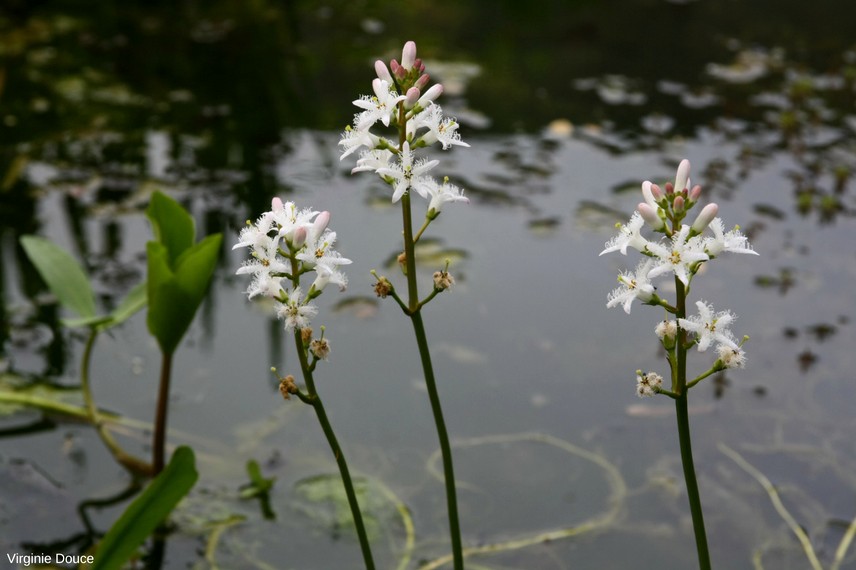
Flowers of water clover.
It requires soil that is always saturated with water or to be covered with 10 to 30 cm of water. Count 4 plants per 1 m2 for a quick effect. This plant spreads easily without being invasive and can be used in small ponds. Avoid limestone.
Place it in full sun or partial shade, in still water or in slow current.
Water horsetail (Hippuris vulgaris)
The water milfoil is a cosmopolitan aquatic perennial that stands out of the water like small miniature fir trees, provided the water depth is less than 60 cm. The flowering is insignificant.
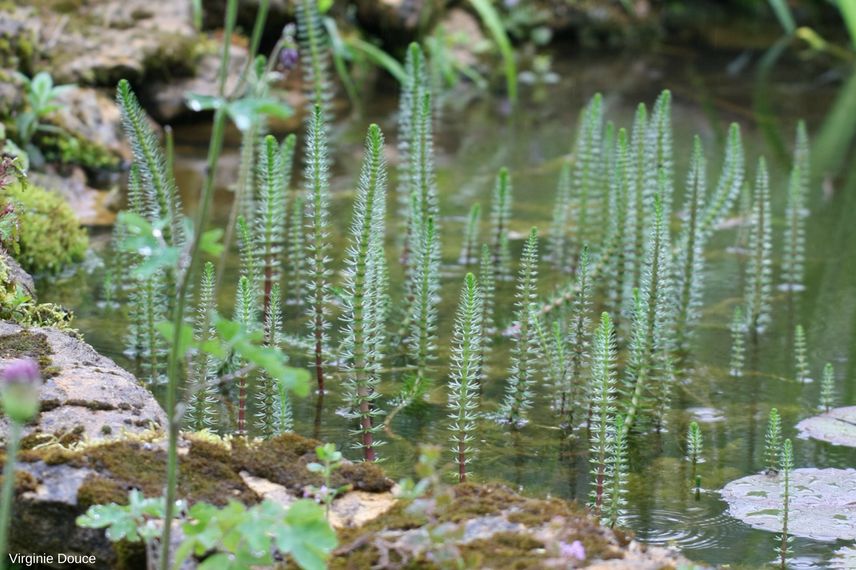 The water milfoil forms a lilliputian forest of fir trees.
The water milfoil forms a lilliputian forest of fir trees.
It requires immersion of 10 cm to 40 cm. Limit yourself to 2 or 3 young plants in a pond as, although it takes a little time to settle, it quickly becomes invasive. In a small pond, restrict its spread by placing it in a deeply submerged basket. However, you can remove part of it every year to limit its expansion.
The water milfoil prefers a sunny or dappled exposure.
This plant plays an effective role as an oxygenating plant.
Arrowhead (Sagittaria sagittifolia)
The aerial leaves of sagittaria are lance-shaped, while the submerged leaves are long and ribbon-like. The white flowers, single or double depending on whether it is the type species or the ‘Flore Pleno’ variety, appear along stems well above the water.
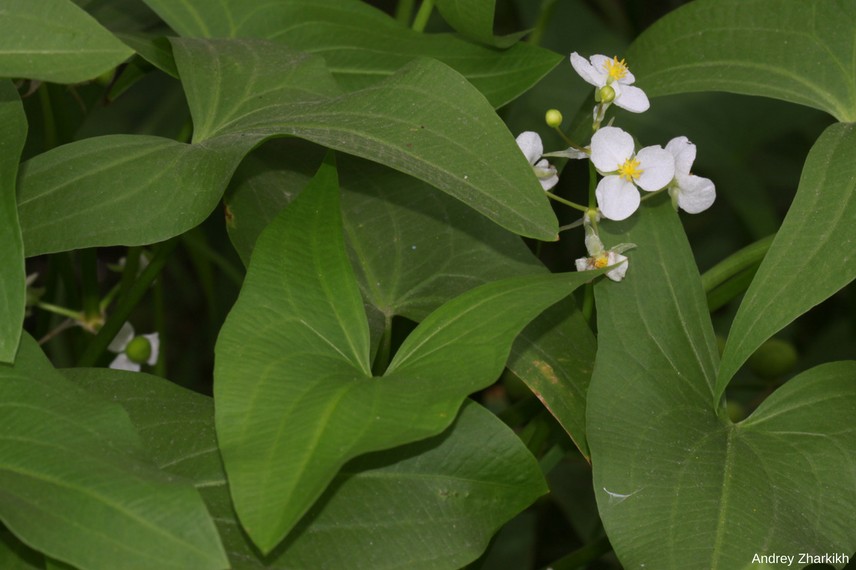
Flowers and lance-shaped leaves of sagittaria.
Plant it in 15 to 40 cm of water. As sagittaria can quickly become invasive, it is better to plant it in a mesh basket and remove any bulbs that float to the surface.
Place it in full sun or light shade.
Sagittarias are excellent pollution-filtering plants, particularly for excess nitrates and phosphates.
The variegated reed (Phragmites australis 'Variegata')
The reed is a large perennial grass, with the variety ‘Variegata’ having the distinctive feature of beautifully variegated yellow foliage. This foliage persists for a good part of the winter. Its height ranges from 1.5 to 2 m, providing verticality and structure. The summer flowering appears in the form of purple panicles that eventually turn silver.
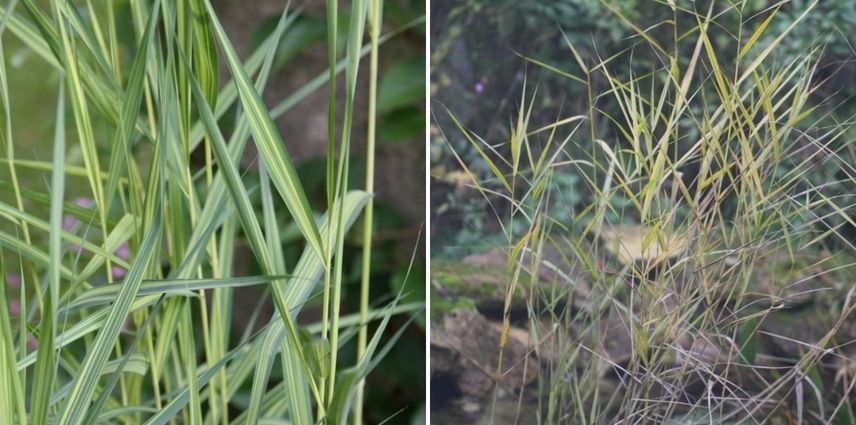
Superb decorative foliage of variegated reed: in spring and autumn.
Plant it between 0 and 20 cm underwater. This variety is less invasive than the typical species. However, it is advisable to cultivate it in large containers and divide it when the plant seems to be cramped or starts to outgrow its pot, from spring to autumn. Count on 1 to 2 plants to cover approximately 1 m2 more or less quickly.
It should preferably be placed in full sun, although it also adapts well to light shade.
The reed is the ultimate depolluting plant and is widely used in phytoremediation, particularly in lagoon areas. It is also perfect for stabilising riverbanks.
Water milfoil (Myriophyllum aquaticum or brasiliense)
The myriophyllum has finely dissected whorled foliage with tips emerging from the water.

Myriophyllum carpet.
A small piece easily covers 1 m2. Install it in a basket or simply wedged under a stone at the bottom of the pond, at a depth between 10 cm and 50 cm. Install it at 30 cm depth in cold areas. Trim it back fairly frequently or remove some each year to limit its spread.
It can be installed in a pond in full sun or partial shade.
Myriophyllum is a vigorous, oxygenating, purifying plant, and thus aquatic vegetation is beneficial for fish spawning and serves as a refuge for aquatic wildlife in general.
Finally, this aquatic plant is considered invasive, and it is strongly advised against planting it in open environments.
- Subscribe!
- Contents
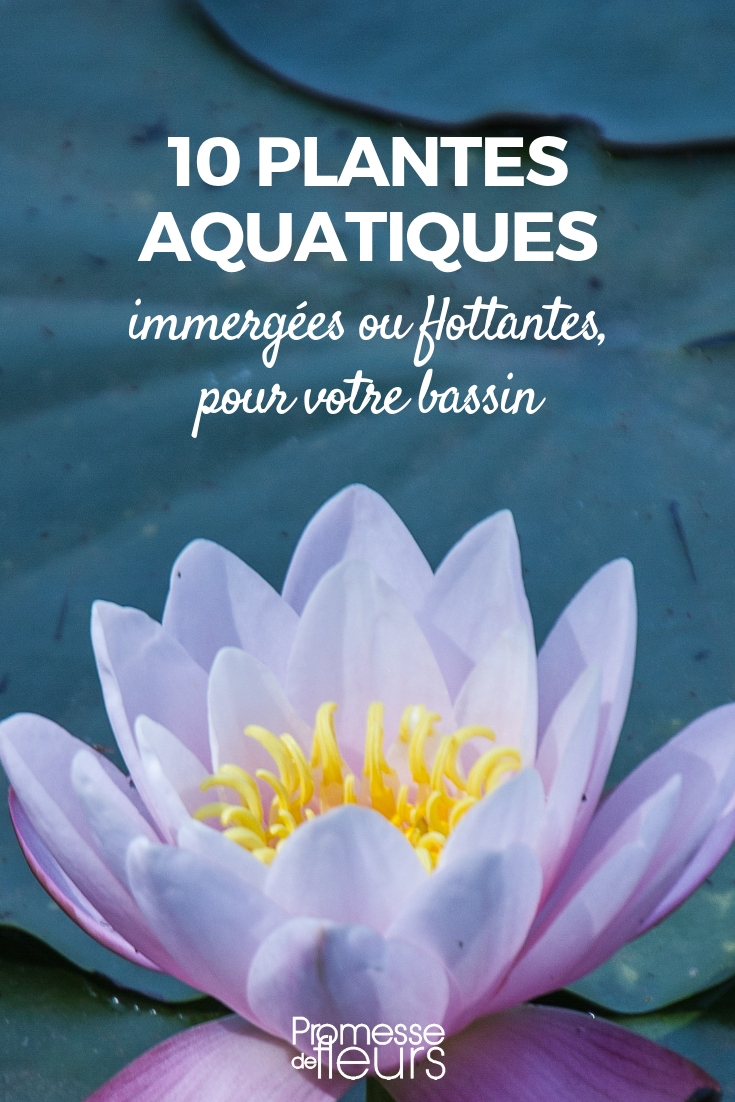































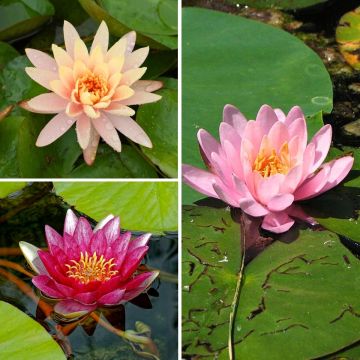
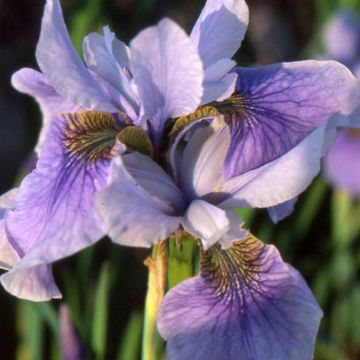
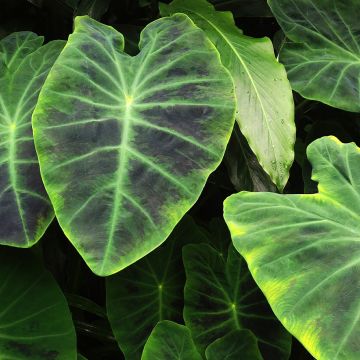
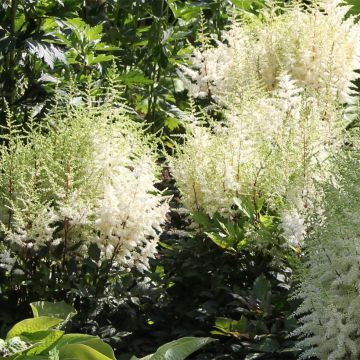
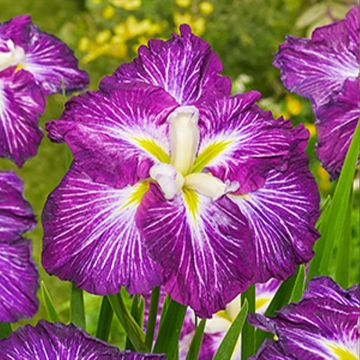

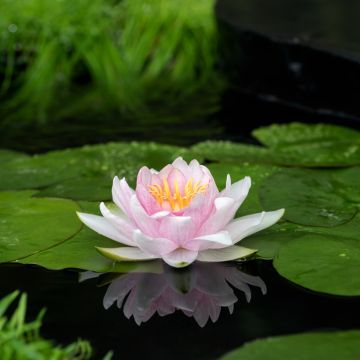
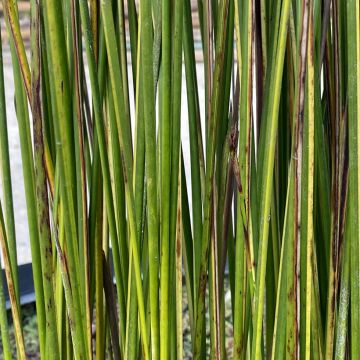
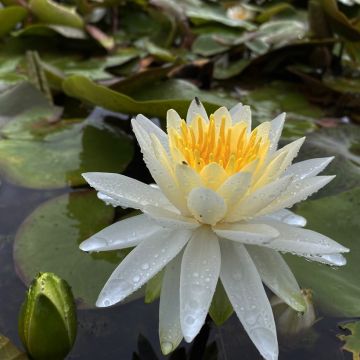
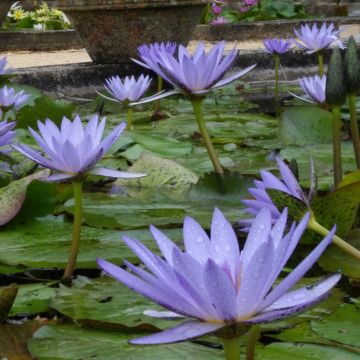
Comments